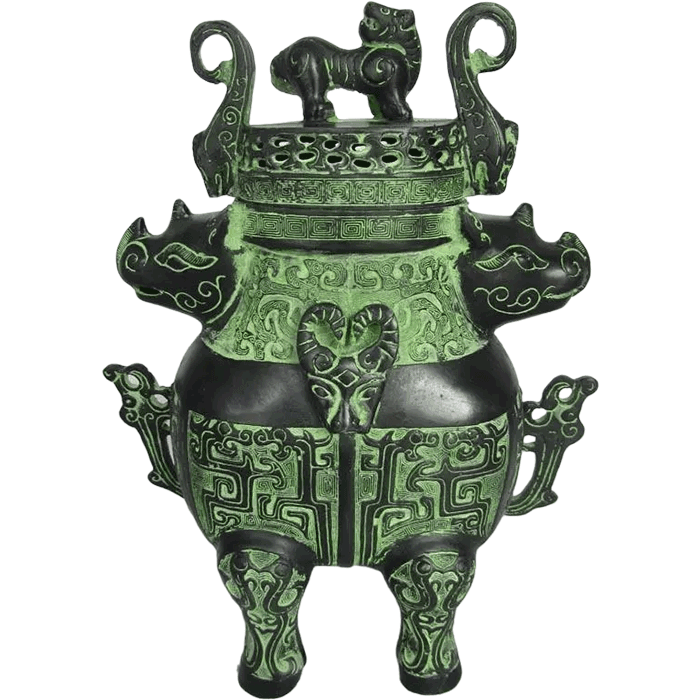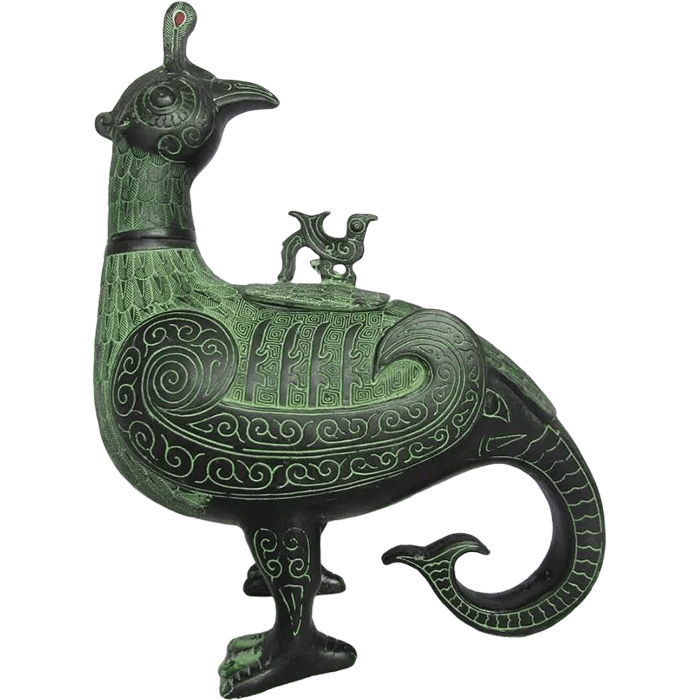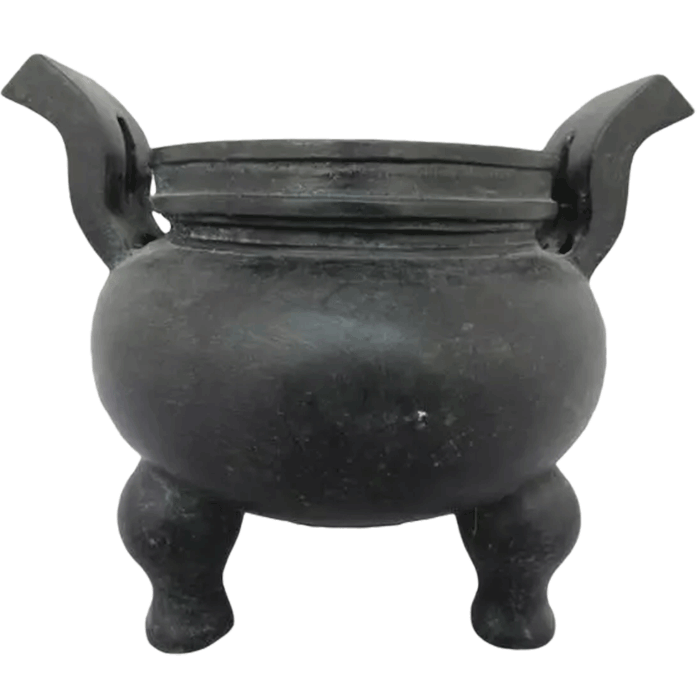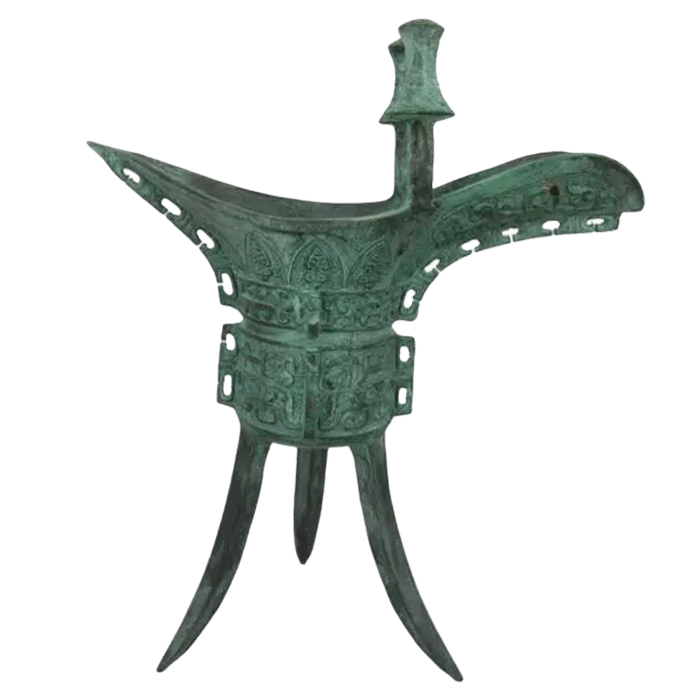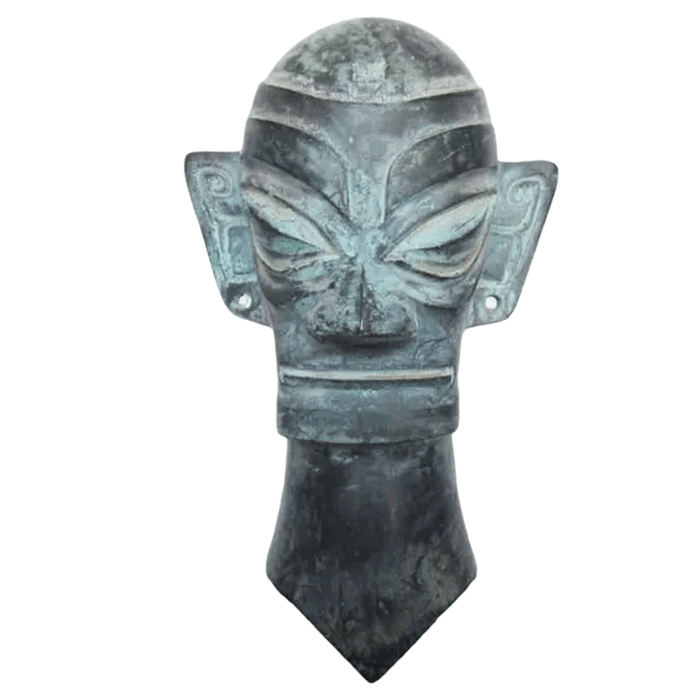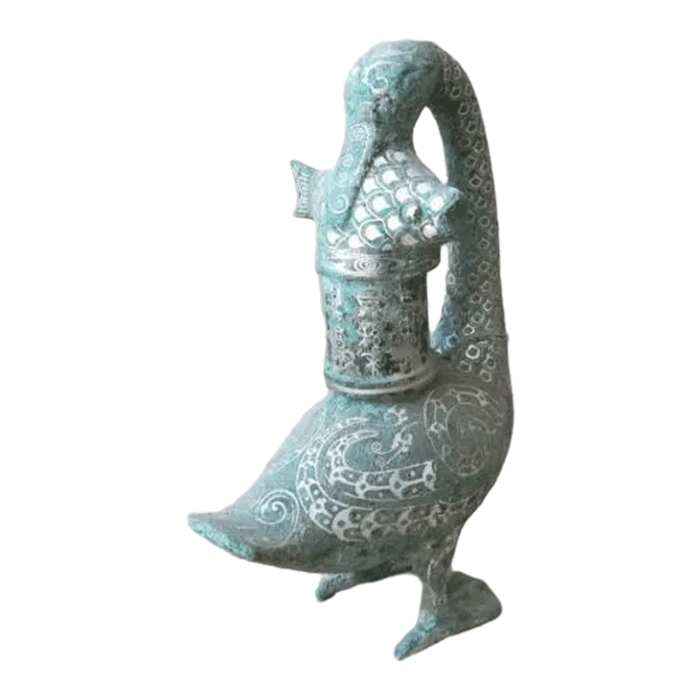Gorgeous and inlaid gold and silver sculpture
"Gold and Silver"
Since the Spring and Autumn Period in China, a craft called "inlaid gold and silver" has appeared, also known as "wrong gold and silver" or "gold and silver". This metal decoration technique is mainly used on bronzes and other practical utensils.
The process of "inlaying gold and silver" includes two techniques: inlay and "wrong":
Inlay: Refers to fixing two objects, large or small, together
Embedding: refers to clamping a small object in the gap of a large object.
"Wrong": Duan Yucai, a philologist in the Qing Dynasty, commented: "Wrong, it is common to paint, but also to make measures, which is called gold measures."
The specific production process of "inlaid gold and silver" is: first pre-cast shallow concave-convex patterns or fonts on the surface of the bronze, and then use a harder tool to carve shallow grooves, and then insert thin gold and silver wires and pieces in the shallow grooves. Grind the wrong with the house (wrong) stone, so that the surface of the embedded gold and silver wires, pieces and copper ware is smooth. Finally, the surface of the device is further polished with charcoal and water to make the surface of the device more brilliant. The surface of the utensils decorated with "wrong gold and silver" technology, the different luster of gold, silver and bronze complement each other, making the patterns or inscriptions extraordinarily gorgeous.
It is easy to understand how to decorate utensils with "inlaid gold and silver" technique, but what if it is used to decorate the surface of sculptures? Is it a bit unimaginable? In this period, there was such a kind of sculpture inlaid with gold and mixed with silver. The effect is magnificent. It can be said that it is a kind of sculpture in the history of Chinese sculpture. It also represents the unique style of art in Shang, Zhou and Han dynasties. Let's experience some of these sculptures today.
Warring States wrong gold and silver inlaid copper sacrificial statue
Sacrificial Zun is not Rhinoceros Zun:
Zun: It is an ancient wine container with many shapes.
Sacrificial Zun: Zuns in the shape of birds and beasts are collectively called sacrificial Zuns.
Rhinoceros Zun: The one shaped like a rhinoceros is called a Rhinoceros Zun.
This sacrificial statue is in the shape of a cow, with its head raised and its ears raised, and its cloven hooves. It is cast from the head, body and cover. The head and body are cast separately and then welded. The ingenious design is that there is a collar on the neck, which naturally covers up the traces of welding. The cover is a long-necked bird with a flat beak, the neck of which is folded back, and the beak is close to the back, forming a semi-circular cover button. The two wings are spread flat, the feathers are paved with turquoise, and the whole body is composed of gold and silver threads of alternate thickness and thickness. These mixed gold and silver lines not only do not affect the integrity of the shape, but also add a unique charm.
Warring States wrong gold and silver double-winged beast
The two-winged beast is 40 cm long, with a curved neck and head raised, wings growing from both ribs, raised buttocks, and bowed limbs, eager to rise. The whole body is made of silver, the body has a curly cloud pattern, and the animal wings have long feather patterns.
The back is decorated with two symmetrical silver bird patterns. There are inscriptions cast on the bottom, explaining the production time, craftsmen and supervisory officials.
Why do we call it a beast in general? It is because the identity of this divine beast is still controversial in academia:
One way of saying it is Fei Lian. In ancient mythology, there was a kind of "wind god" named "Fei Lian". It is said that "Fengshen Feilian" has a long hairy body and two wings. It is a kind of divine beast that is good at flying away.
Another way of saying it is to ward off evil spirits. In some places in our country, many mythical beasts of the Eastern Han Dynasty——Bixie have been unearthed. "Bixie" is shaped like a lion with wings.
In fact, maybe this mythical beast has some kind of mysterious connection with the Sphinx of ancient Egypt and the sphinx of the ancient Assyrian Kingdom? It seems that there is always such a winged beast in the ancient civilizations of the world.
Eastern Han Dynasty Silver Copper Bull Lamp
The Copper Bull Lamp is assembled from three parts: the lamp base, the lamp holder and the smoke pipe. The lamp base is a yellow ox standing with its head bowed and its horns raised. The belly of the cow is hollow, and it bears a round lamp panel. There is a flat handle on one side of the lamp panel, which is convenient for turning the lamp panel. The panel is decorated with two lampshades that can be rotated flexibly. The role of windshield and dimming.
The whole body of the Copper Bull Lamp is smooth, with exquisite craftsmanship. The surface is made of silver wire to form flowing cloud patterns, triangle patterns, and spiral patterns. It is decorated with patterns such as dragons, phoenixes, tigers, deer, and various animals. Elegant and chic.
Bronze Rhinoceros Zun with Wrong Gold and Silver Cloud Pattern in Western Han Dynasty
This copper rhinoceros statue with gold, silver and cloud patterns is famous for its realism. It is amazing that craftsmen in the Western Han Dynasty had such realistic modeling ability.
The image of this rhino is lifelike. It has a strong body and muscular body. It stands with its head held high, its pointed horns pointing upwards, and its eyes are focused on the front.
The eyes of the rhinoceros are inlaid with beadwork, and look radiant. Four thick and strong legs strongly support the robust body. The texture of each part of the rhino’s body is in place. The cheekbones and elbows protrude, as if you can feel the shape and ups and downs of the bones through the skin; the mouth and abdomen are thick, strong and elastic.
The whole body of the rhinoceros is covered with gorgeous interlaced gold and silver cloud patterns, and the decorative effect is very obvious, adding a mysterious and gorgeous beauty to the copper rhinoceros statue.
What is different from today is that there were a lot of rhinos in ancient China, which should have provided a lot of observation opportunities for the craftsmen who made this rhino statue. Moreover, rhinos are inextricably linked to ancient Chinese civilization. For example, the ancients believed that rhinos are spiritual beasts that can cure floods, so there is a custom of "stone rhinos town water" in many places in China. The rhinoceros is not only an auspicious animal of Zhenshui, but also an object of worship. In ancient times, the image of the rhinoceros was portrayed on various totems. For example, the Miao people living in today's Guizhou, Hunan, Guangxi and other places have a special custom of worshiping the rhinoceros , They regard the rhinoceros as the totem of the tribe and use it in various sacrifices and ceremonies.
The sculptures inlaid with gold and silver that we appreciate today generally have several characteristics:
First, the animal shapes are very realistic and graceful.
Second, the surface is decorated with gold and silver inlays.
Third, it uses rich decorative patterns unique to China.
Perhaps for the craftsmen at that time, the misplacement of gold and silver on the surface of the sculpture was not just for artistic creation, but for some kind of belief (totem pattern), or to record some events (inscription). But it is this type of sculpture that was born in the middle and late Spring and Autumn Period, flourished in the Warring States Period and the Han Dynasty, and soon ceased to be brilliant, like a sunset glow, leaving us with a glimpse.
Sculpmart is a professional bronze art and bronze wares manufacturer providing Chinese Bronze Handcraft arts which will allow you to have a chance to own a masterpiece of Chinese bronze sculptures. If you like, you may choose the style to customize, send us the image and design, our craftsman will reproduce and cast a perfect bronze ware for you.


